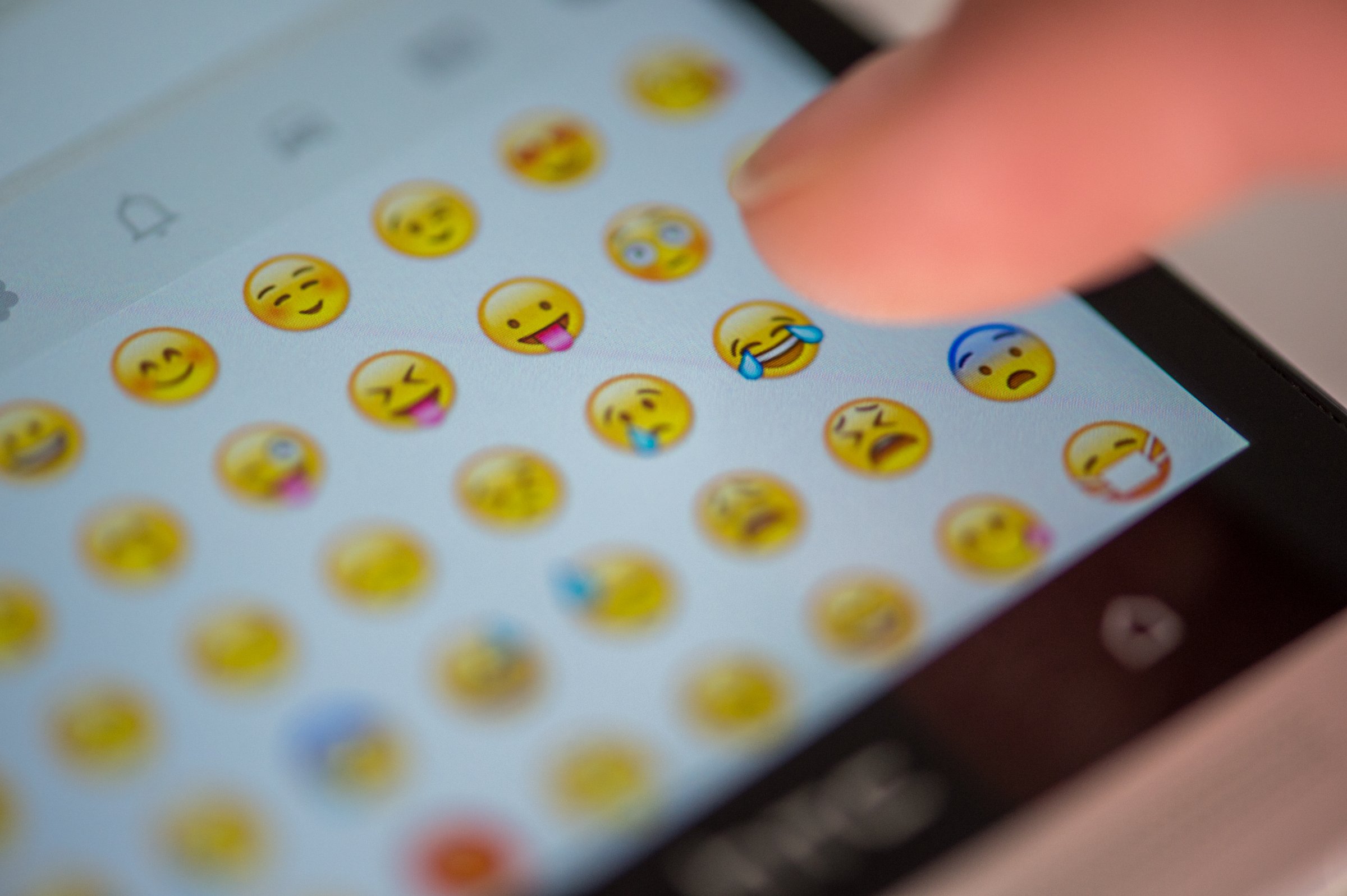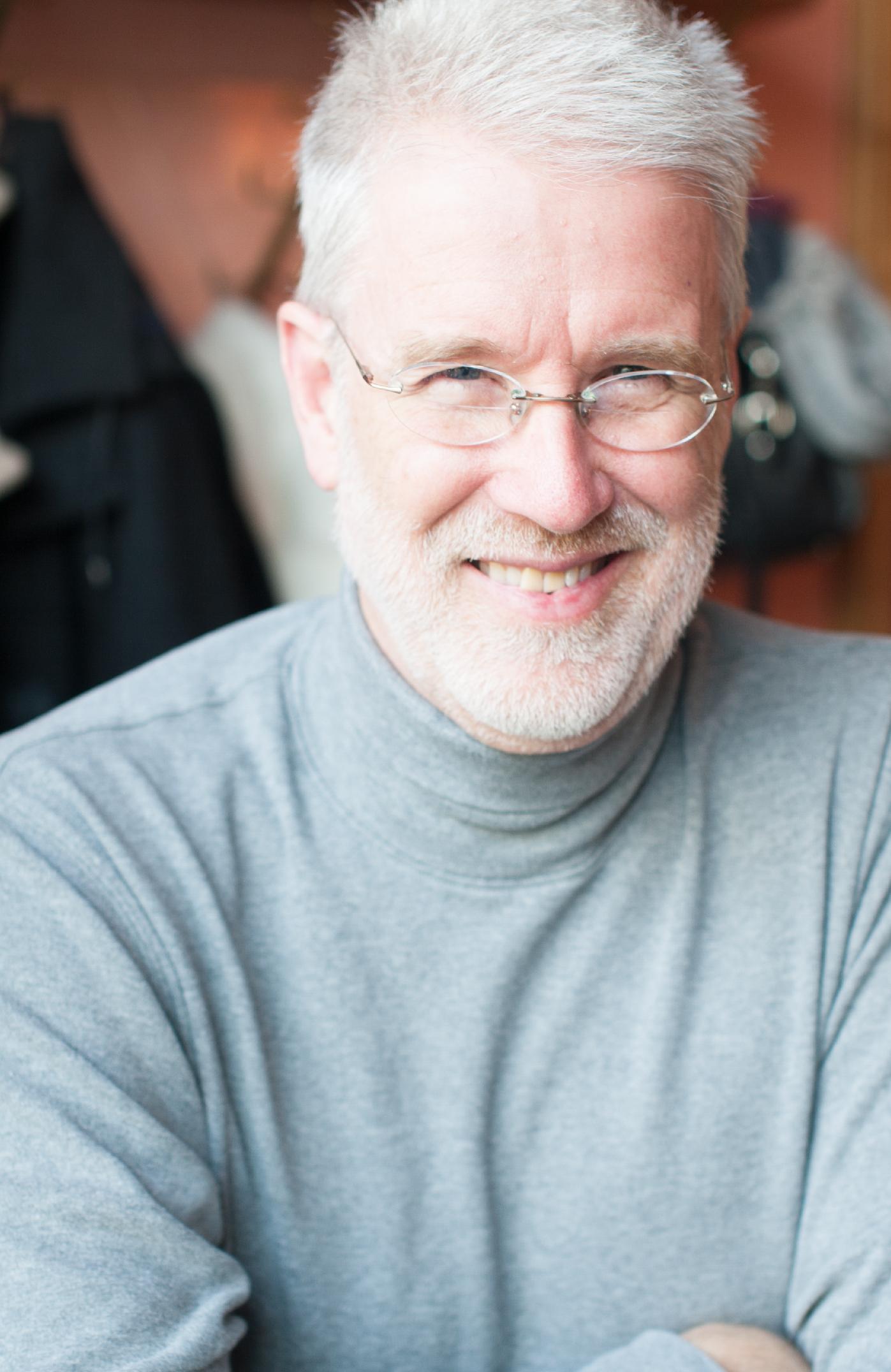
Oxford Dictionaries’ 2015 Word of the Year wasn’t a word at all. It was an emoji, one of the tiny pictographs that have come to dominate communications on social media and messaging apps.
An evolution of the less visual emoticon, emojis are now so ubiquitous that they can be used to translate song lyrics into a visual language, added to Twitter hashtags in million-dollar ad campaigns, or employed to tell the history of the world. While the cartoonish symbols have a whimsical air, they don’t come into the world by magic. The process for bringing a new emoji to life involves thousand-word proposals, multiple rounds of committee votes and rare collaboration between Silicon Valley’s most powerful companies.
Steering the process is Mark Davis, the co-founder and president of Unicode Consortium. The group, made up mostly of volunteers from tech firms (Davis, 63, works at Google), votes on which new emoji to add to the roster of available symbols each year. While emoji have brought the Consortium into the spotlight, the non-profit’s mandate extends to standardizing digital text exchanges across different computer software in hundreds of different languages. Unicode is the backbone of digital text, allowing computers to transform numeric codes into letters and symbols we can all understand.
Still, it’s the Unicode Consortium’s newfound influence over the visual language of the Web that earned Davis the nickname “shadowy emoji overlord”—and he has the T-Shirt to prove it. TIME spoke with Davis about the emoji approval process, the fight for more emoji diversity, and how bringing his group into the spotlight has actually helped it advance its goals. The interview has been edited for length and clarity.
TIME: Why did you help found the Unicode Consortium?
Davis: We started with this project before the Web had even started [in the late 1980’s]. The problem that we found was that computers had grown up in isolation. Different manufacturers in different countries had developed different ways of encoding characters. Whenever you type a character on your laptop or your smartphone, it’s going in as a number, and that number represents that character. It’s vital that everyone uses that same numbers because if anyone doesn’t use the same number, then text gets garbled…Unicode grew out an effort at Xerox and at Apple—I was at Apple at the time— to straighten out all of this mess and come up with a single encoding that you could be guaranteed the same character no matter where you were. At this point every modern operating system—your laptop, smartphone, mainframes, the whole Web—is all based on Unicode.
When did emojis first appear on your radar?
They originated in Japan just before the turn of the century. We didn’t know whether this was just a faddish thing at the time. Later on, a number of our companies needed to work with the Japanese telecom vendors, and we found a problem in that they were using these emojis which had no standard numbers. The three Japanese carriers didn’t even agree on the same numbers for the same emoji.
A number of us pushed for Unicode to take this on. We ended up finally putting in the first version of emoji in Unicode a couple years later [in 2010]. It was then picked up by the iPhone, Android and the major operating systems and so forth.

How do you decide whether an emoji is worthy of inclusion?
There are a number of factors that play into whether or not a proposal will be successful. Probably the most important of those is whether you, the proposer, can build a good case for why this will be a commonly used emoji.
One of the other main factors is, it’s got to be something that can be represented in reasonably distinct fashion . . . if you can’t have an image that kind of tells you, ‘Oh, this is doctor or this is paella or this is hamburger,’ that’s a much less interesting proposal.
Many people are calling for more diverse emoji when it comes to race and gender. When did you become aware of this issue?
When we originally designed emoji, the goal was to be as neutral as possible. The emoji charts that Unicode supports are black and white and other people will interpret them in color for realism . . . we struggled with how to deal with [diversity] for a bit because what we didn’t want to do is multiply the emoji tremendously.
It makes a big difference as far as the amount of memory your phone has. It took about a year of involvement by a lot of people in order to come up with a model that worked. Right now, if you use an iPhone, you can long press on a man and you can choose a different skin tone.
Have you seen people use certain emoji differently now that they’re more diverse?
Often people think of emoji as a universal language, and they’re really not. Many different cultures will give different meaning to different emojis. The emoji will start to be used in different ways.
I’m sure you’re aware of the use of the eggplant emoji, for example. (Ed. note: Eggplants are sometimes used in a suggestive fashion). . . I don’t know if anyone has done a study on it, but I think it’s clear that a lot of people are picking different skin tones according to whatever they’re trying to say.
There are plans to make emojis that are more gender-inclusive in the future. Can you talk about that?
We just released a draft specification. That draft, if we end up approving it, will allow vendors to be able to support a male runner, a female runner, and if they want to, a neutral runner of no specific gender [for example]. It provides for taking a number of different characters and saying, ‘I would like to have a female version.’
How does a change like that come about?
We get feedback through a number of channels. We get feedback directly to the consortium. A lot of the feedback we get, however, is through our members which, for a large part, are larger tech companies. We also have a number of members that represent [smartphone] keyboards. We have members that represent governments [including Oman, India, and Bangladesh].
Who can submit emoji ideas?
Well, anyone can. We do ask that they look at the submission form that we have and fill out the information that we need. It has to be serious effort. It’s not just a, ‘Oh, well I think it’d be nice to have a drunken chipmunk emoji.’
You basically just need to make a case to us to say why is this going to be a popular emoji, why are people going to care about it. You can’t just say, ‘Well, I think that a drunken emoji would be very popular because all of my friends say so.’
If I don’t necessarily have a new emoji idea but I want them to be more race-inclusive or gender-inclusive, what’s the best way for a regular person to make their voice heard?
A very promising avenue is to contact the tech companies for the products that they’re using because those companies are able to take that kind of feedback and assess it and then bring it to us. You can also contact us directly. With all of these proposals, we have public review and people can comment on them.
Do you have a favorite emoji of the ones being considered this year?
I think the facepalm is going to be my favorite. I just find that’s often what I want to say, especially when I hear about how well [Republican presidential candidate Donald] Trump is doing.
I saw a pretty funny picture of you online wearing a t-shirt that said “shadowy emoji overlord.” Where’d you get it? How do you feel about the Unicode Consortium being thought of as this mysterious group?
[Laughs] There was an article that was talking about our “shadowy emoji overlords.” My daughter came up with the idea of having a t-shirt made for me. She and her husband made up the t-shirt and gave it to me, which I thought was pretty cool.
As far as Unicode goes, it’s something that, if we do our jobs right and text just works on the screen, then we are fairly invisible. It’s only really emoji that have brought us to the public knowledge.
How do you feel about the fact that the group has gotten so much attention because of emojis?
The advantage is it lets us shine a light on some of the other work we’re doing. Our main focus has been to enable everybody speaking every language on the Earth to be able to write their language and use it on computers and smartphones. That’s our real goal.
One of the things that people are realizing is that if your language isn’t supported on computers and smartphones, that puts your language group at a severe disadvantage. There are a great many languages in the world that are becoming digitally disadvantaged. One of the things we do is try to work on fleshing out the support for all of the languages in the world. We, just at the end of the year, launched a campaign to help fund some of those efforts.
For example, in the June release of Unicode we are adding Adlam, a script used in West Africa for the Fulani language. Some of the scripts we’ve been working on will take at least a couple of years, sometimes four or five years before we finally get enough information put together about how the script works that we can successfully encode it in Unicode. The more digitally disadvantaged a language is, the harder it is to figure out information about it.
More Must-Reads from TIME
- How Donald Trump Won
- The Best Inventions of 2024
- Why Sleep Is the Key to Living Longer
- Robert Zemeckis Just Wants to Move You
- How to Break 8 Toxic Communication Habits
- Nicola Coughlan Bet on Herself—And Won
- Why Vinegar Is So Good for You
- Meet TIME's Newest Class of Next Generation Leaders
Contact us at letters@time.com